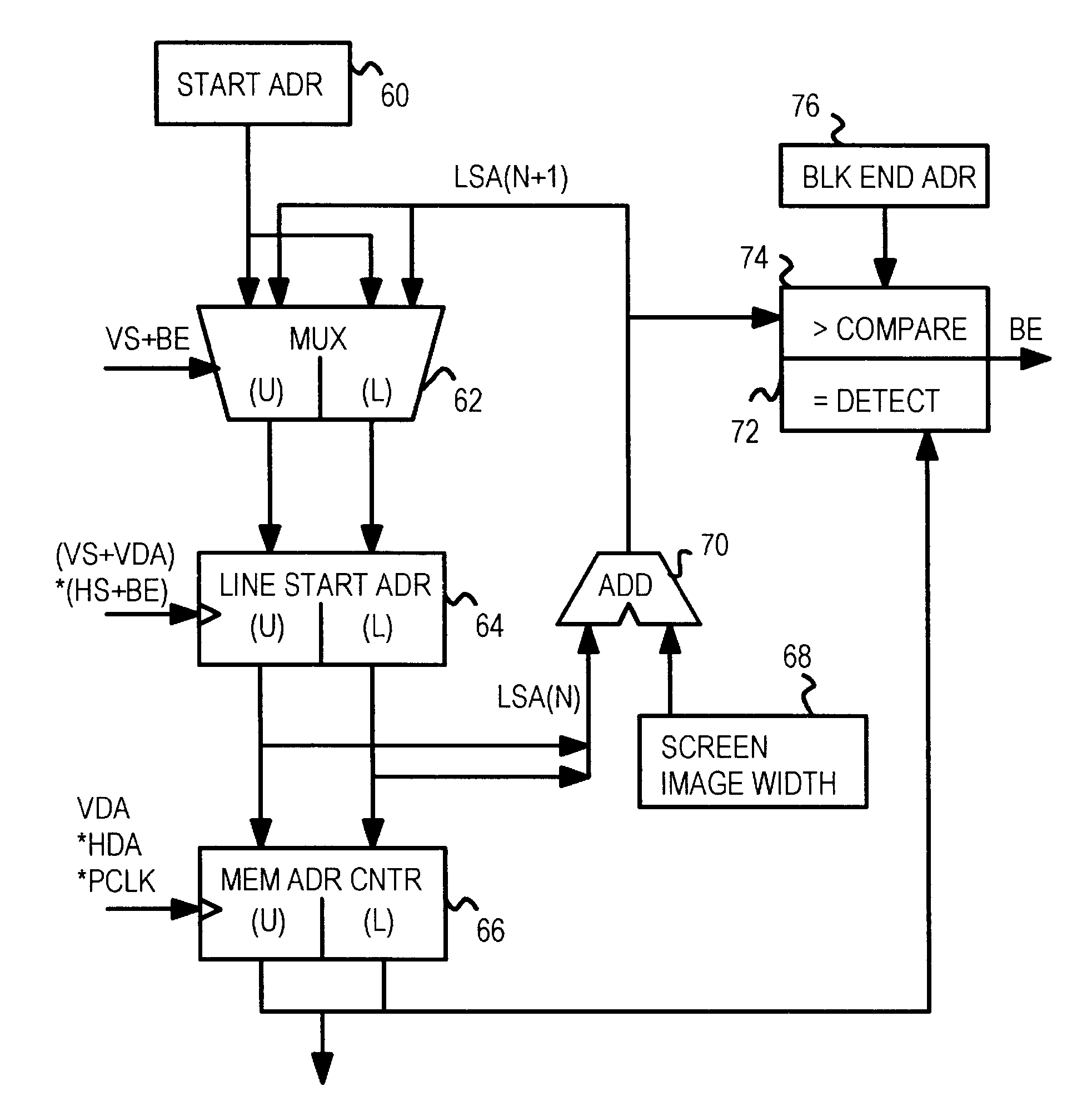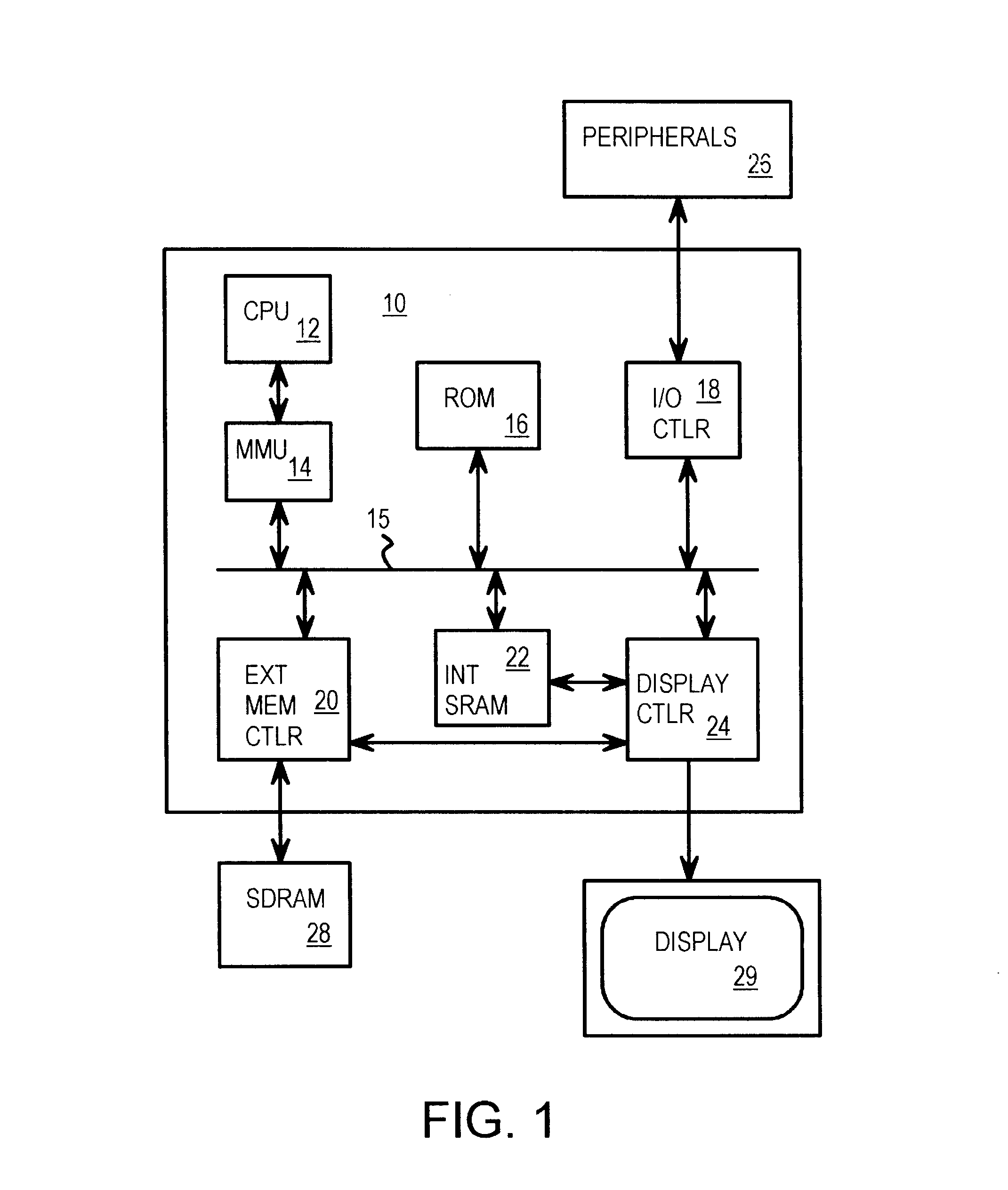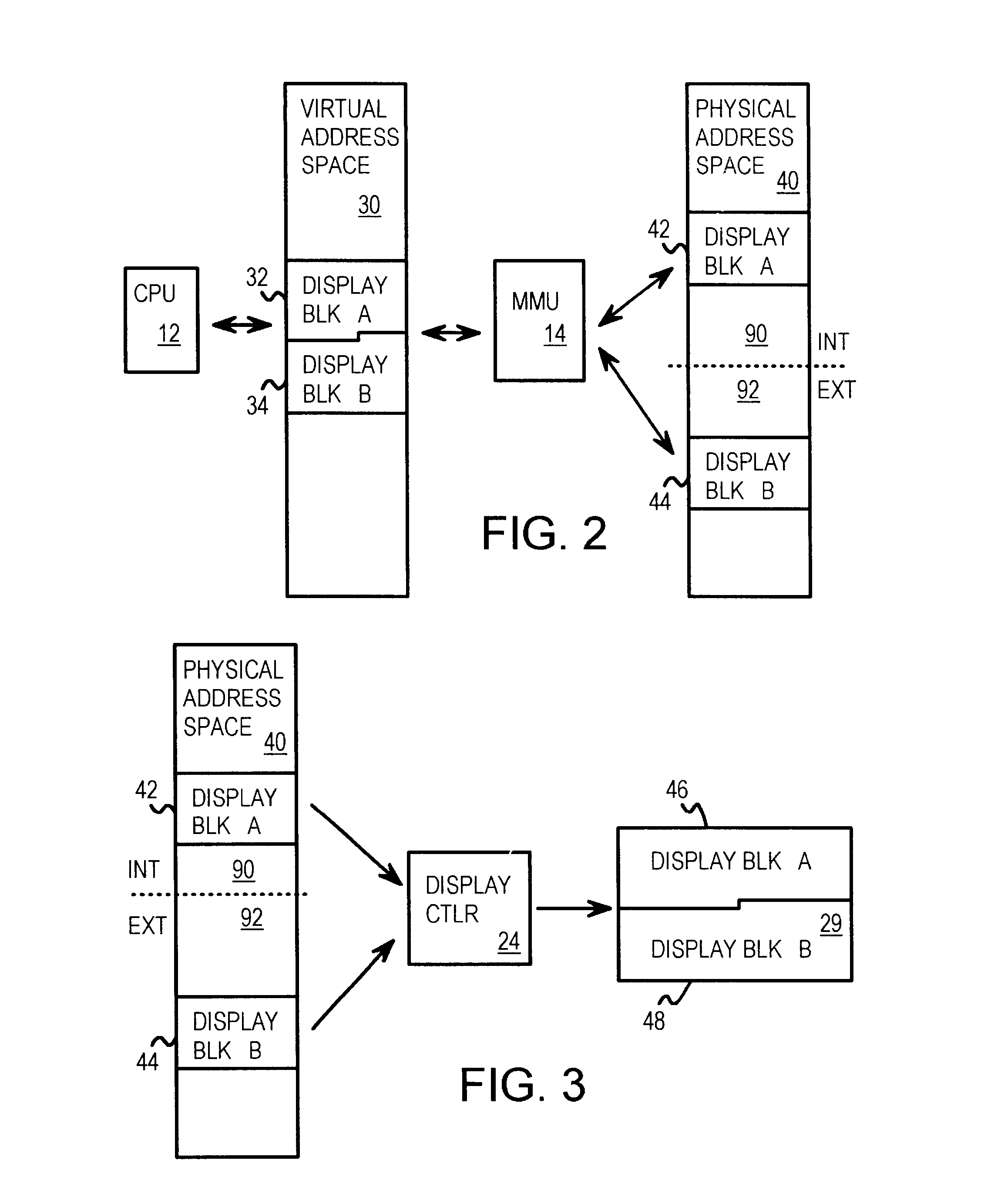Single-block virtual frame buffer translated to multiple physical blocks for multi-block display refresh generator
a multi-block display and virtual frame technology, applied in the field of frame buffers, can solve the problems of reducing the manufacturing yield, reducing the size of the soc die, and even becoming too expensive for many low-cost consumer devices
- Summary
- Abstract
- Description
- Claims
- Application Information
AI Technical Summary
Problems solved by technology
Method used
Image
Examples
Embodiment Construction
Several other embodiments are contemplated by the inventors. For example the address generator of FIG. 5 could be implemented in logic gates and registers, or programmably implemented, or some combination of dedicated hardware and firmware. Other kinds of address translation could be substituted, or paging could be implemented in a variety of ways.
The entire page (all offset address locations within a page) does not have to be used by displayable pixels. Some overhead storage locations may be located on the page, and the last page on a frame can have only some of the available space used. A typical system has many more pages than shown in the drawings. For example, a frame buffer that stores 1 M-byte of pixels uses about 256 physical pages when each page is 4K in length.
The physical address of the memory may be specified in units other than bytes. For example, the physical memory may be read in words of 4 or 8 bytes. The memory address counter can be made to increment by one memory ...
PUM
 Login to View More
Login to View More Abstract
Description
Claims
Application Information
 Login to View More
Login to View More - R&D
- Intellectual Property
- Life Sciences
- Materials
- Tech Scout
- Unparalleled Data Quality
- Higher Quality Content
- 60% Fewer Hallucinations
Browse by: Latest US Patents, China's latest patents, Technical Efficacy Thesaurus, Application Domain, Technology Topic, Popular Technical Reports.
© 2025 PatSnap. All rights reserved.Legal|Privacy policy|Modern Slavery Act Transparency Statement|Sitemap|About US| Contact US: help@patsnap.com



